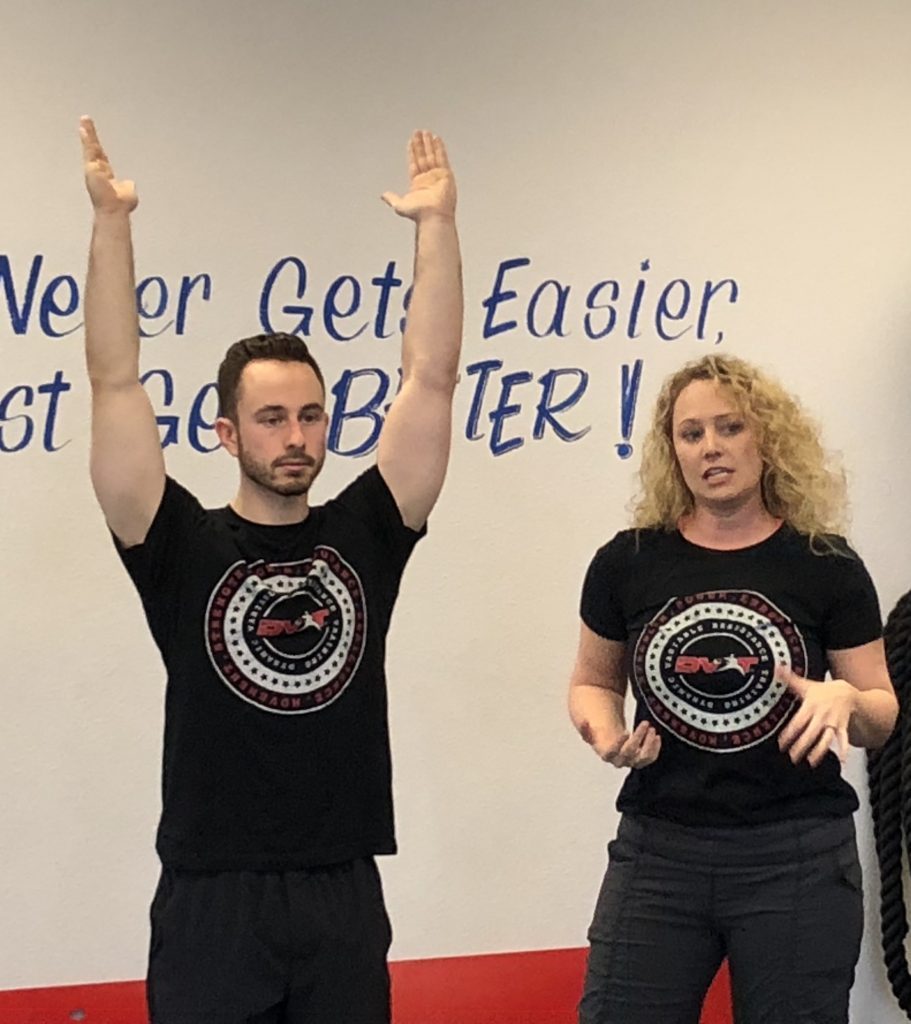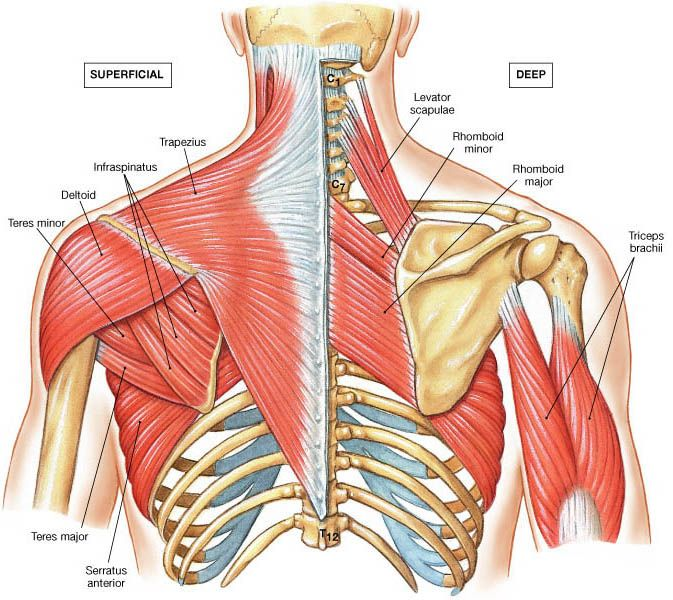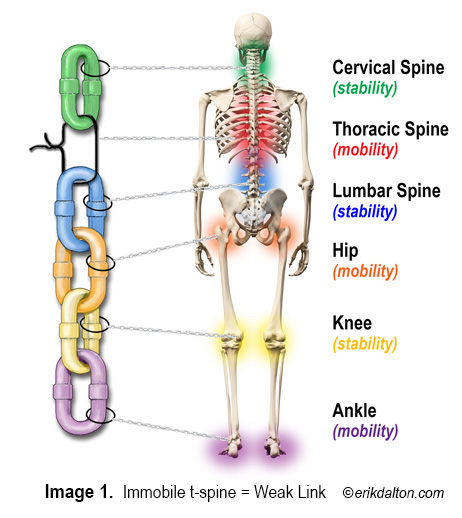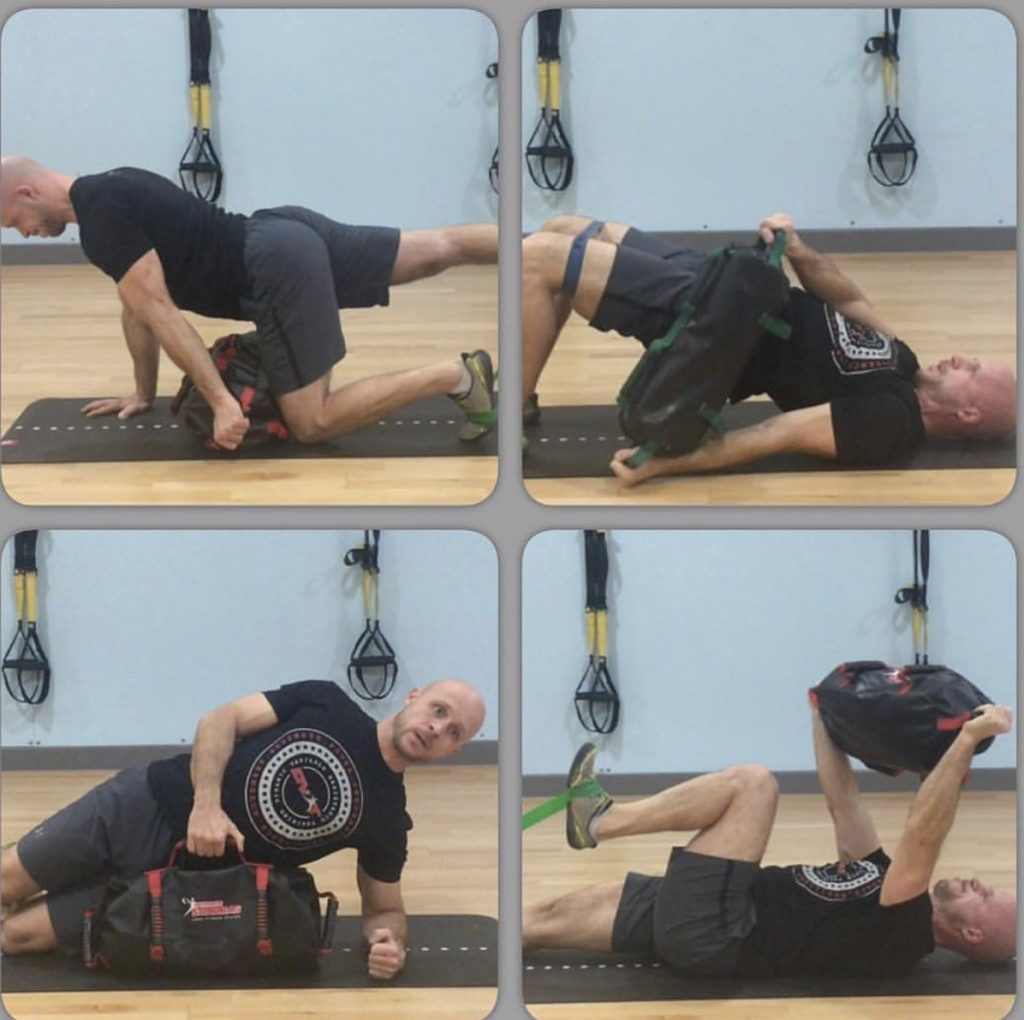How to Use The Plank for Better Shoulders
2018-09-25

Jessica Bento, Physical Therapist (Creator of DVRT Restoration, DVRT Shoulder Course, DVRT Pelvic Control Course)
I’d love to be able to say it, that my fellow physical therapists have a better understanding of movement than most any other health professional. Sadly, I can’t say that as going through physical therapy school I can tell you that we don’t get trained in the manner that most people believe. Don’t get me wrong, we get a lot of skills that can help people but I am disappointed looking back that we don’t get more that can make a really difference for those that seek us out to help them with the quality of their life.
Like any profession, there are definitely those that are making huge waves in physical therapy, but unfortunately not enough. With a changing health insurance model more and more people are relying on fitness professionals and physical therapists to do my more! We have a horrible epidemic of chronic pain in the US and there is very little sign we are going to see it get better! That is why we are so driven with DVRT to not give people sandbag information, but movement education. So, you might think that discussing the plank would be odd.
Sure, you probably think you get it, the plank is good, you have probably even challenged friends to see who can hold a plank longer. Some may have even come up with incredibly creative plank challenges, but we tend to forget about what the plank is really about and how it can be the answer to both helping shoulder mobility and health!
That is something you may not hear as much about, but using the plank for shoulder therapy is going to be a big part of what I am going to be presenting at the National Strength & Conditioning Association Nevada state clinic at the UFC training center. Since many of you may not be able to attend, I want to share how transformative understanding the plank can be in so many ways for the shoulder.

Even as detailed as this is, we are still missing BIG concepts of building more stable & stronger shoulders.
When it comes to helping the shoulder we often hear two things, you have to really stretch it or or mobilize it, and/or you gotta really improve the stability of the shoulder. In both those cases, what is it that we really mean by brining up those topics? It may make sense that mobilizing or stretching the shoulder would be necessary for its health, but is it?
Most people don’t ask WHY is the shoulder mobility reduced. This is where understanding the plank is going to change how you think about the shoulder. Josh has spoken many times about the PNF concept of “proximal stability for distal mobility” and while many people will say they have heard of it, most don’t seem to understand it.

If we don’t understand how the body is suppose to function and work with itself we can’t work to make it better.
Simply, the more stable the body, the more mobility the nervous system permits to the body. When I see shoulders with reduced mobility the first thing I think about is where is the person lacking stability. It can be not only the core (which 35 muscles are responsible for not just the abs), but the hip and lower body as well.
You can see that the shoulders and hips are the same type of ball and socket joints and when you think about the fact that in life we move with opposing limbs, it makes sense that we would look at the corresponding opposing joint when we look at helping the shoulder. Most people only focus upon movement of the shoulder and that isn’t how the shoulder performs. Like all muscles and joints of the body, the shoulder is part of a chain so not treating the entire chain leaves our training and help to the shoulder very incomplete!
This is where understanding what we want to achieve in the plank becomes really important. While most focus on just the plank, the reality is all we want to do is to teach how to brace the core and create tension from head to toe. It is both these aspects of the plank that help us create the stability we want to achieve. Getting the plank right means not just hanging out in the plank, but DRIVING into the ground with the forearms, hands, and balls of feet. Just like we talk about in DVRT all the time, force ALWAYS comes from the ground up!
Josh shows the concepts of building from the ground up and using the whole body in the plank.
Once we can plank for repetitions of 10 second intervals (as per recommendation of spinal expert, Dr. Stuart McGill) we can look at progressing the plank to more functional patterns. While wildly create plank challenges are great, there are really two things we should be striving for in progressing our plank.
Making the plank multi-planar!
When you look at Dr. McGill’s “Big 3” core stability exercises (bird dog, side plank, and curl up) you notice that two out of the three movements are multi-planar. That is because true core strength is often reflected in being able to resist movement, not really producing it. When we have to resist movement and the planes of motion we develop a plank that relates the real world more. Not only carries over to the real world more, but to building a platform for the shoulders to be stronger and guess what? Become more mobile!

Many of those Big 3 exercises get a bump with our DVRT movement concepts
How do we achieve this? Our Iso Pulls and Lateral Drags are great examples and they aren’t just MORE anti-rotational exercises, but they actually engage the lat, core, and glute connection (Josh wrote about this important connection HERE) that plays a big role not only for the low back, but the shoulder as well. These movements should PROCEED other drills like shoulder taps because we don’t have the same level of engagement of these chains. Using the load builds strength and the Ultimate Sandbag offers important feedback!
Getting people more upright is another way we make the plank more functional (remember the plank isn’t THAT functional by itself because we don’t move!) because we are navigating gravity more and have to balance our body as we resist movement. That is a BIG reason that I love using the half kneeling position to teach people to drive in their feet to stabilize their pelvis and this INSTANTLY helps the shoulders. Combine this with deliberate use of the hands and lats and we can change something like pressing from being a painful movement to almost completely pain free!
Create strong connections in dynamic exercises!
Sadly, most people only see weight as a way to challenge movement. While it can definitely achieve this goal, we use load with the Ultimate Sandbag to do something more. We look to constantly make connections through the chains of the body through the use of the Ultimate Sandbag. As Josh says all the time, it isn’t about using the Ultimate Sandbag, it is about HOW we use the Ultimate Sandbag.
Understanding the tips like pulling the handles apart or how we hold the Ultimate Sandbag completely changes the effect we get from exercises. That is why we are so dogmatic about using the RIGHT handles because it changes the outcome of the exercises. This is the difference between benefiting from the Ultimate Sandbag versus simply “working out” with the Ultimate Sandbag.
Everything we do with in DVRT is a plank and reflects all the qualities of the good movement that ultimately leads to almost like “magic” changes in the body. It isn’t magic, but as Dr. Craig Liebenson says, “it’s all neurology!” He is referring to the simple fact that we know that our nervous system plays such a HUGE role in our movement, but when it comes to training we end up doing things that don’t take into account how our nervous system governs movement. It is these reasons of connections, neurology, and chains of the body how our DVRT MAX Lunge is not only a dynamic plank, but a shoulder exercise as well. It is why how we engage the Ultimate Sandbag gives us a plank and stability to the body that makes our shoulders strong and stable.
People who hurt don’t care about science or who like this or that method more. They care about getting better, it is the job of all health professionals to gain a better understanding of movement and function of the body so we can deliver on those results for those that need us the most!
Learn more about how DVRT is changing the way we understand the body. Save 25% on our DVRT Online education HERE with coupon code “save25”
View this post on Instagram
© 2025 Ultimate Sandbag Training. Site by Jennifer Web Design.






